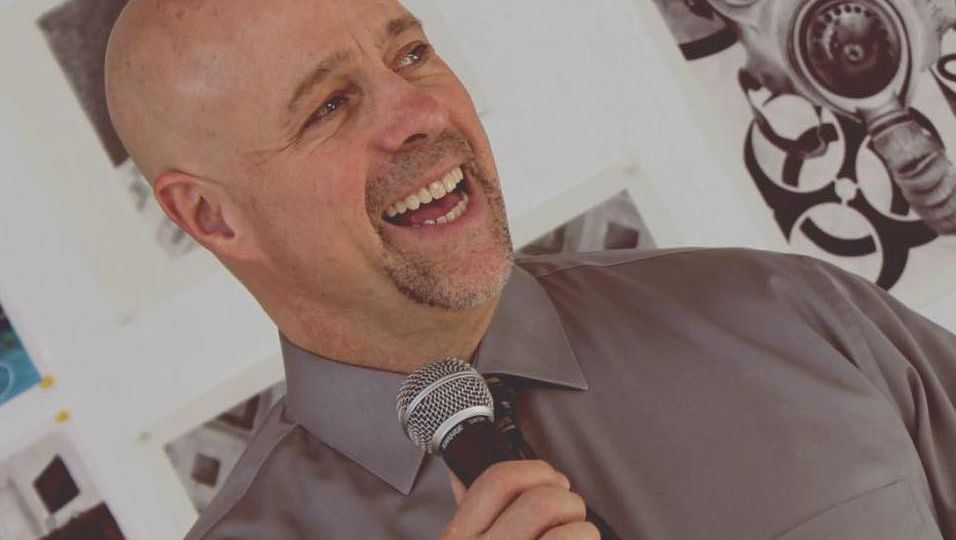
David and I met through a group for speakers. He shared his passion for mental health, and of course, I was immediately intrigued. I found his Ted Talk video and about 5 minutes in, I knew this is someone I wanted to meet. One Skype session later and our connection was solidified. The rest is history!
Before you read David’s guest essay, I encourage you to go to his website and learn more about his work and passion for mental health advocacy. He is a dynamic speaker and author. -Sarah
“Sometimes our light goes out but is blown again into instant flame by an encounter with another human being.” -Dr. Albert Schweitzer
“What should I do?”
“What on earth can I do?”
These are the type of urgent questions that arise when we are at a loss of how to respond to the need of another.
Such questions are not of the mundane and ordinary, “do you need any help?” variety. No, these are of the heart wrenching, desperate plea variety, asked from the space of being aware of another’s need, feeling motivated and wanting to help, but having no idea how best to render aid.
In these moments, the experience of personal despair can be horrific; we are witness to tragic suffering, the drowning of a soul in the dark and frigid waters of isolation, and all we can do is stand by and watch.
But what if there was a lifeline we could cast out forth and bring the one in need to the safety of dry land? And, what if that something was so simple, so commonplace that we run the risk of dismissing it as far too modest to make a difference?
What if we could save a life, just by sitting down?
One Exceptional Pup
My former wife, Deanna and I ran a large, nationally recognized animal sanctuary. An extraordinary place that was home to as many as 100 animals at any one time; 25 horses, 23 dogs, 9 potbelly pigs, umpteen goats and sheep, ducks and geese and bunnies and birds.
Murphy was one of the many Boston Terriers who came to live at the sanctuary. His short, compact body was adorned with the traditional black and white tuxedo markings of the breed known as the “American Gentleman,” and a “smooshy” face and a “barely there” tail.
Murphy was a handsome pup with a confident yet friendly demeanor. He held his head high, and with ears always reaching skyward, he was the quintessential Boston Terrier; filled to the brim with enthusiasm and gas!
Our beautiful pup was one of the sanctuary’s many special needs animals; those young and old creatures who arrived with different disorders. Their out-of-the-ordinary characteristics, coming about either by birth or environment, often meant that had very little chance of being adopted.
But this was the very population that made up the family of animals who arrived, one by one. The sanctuary did no adoptions, and so each unique soul that landed at our door did so knowing they had come to their, “Forever Home.”
As far as Murphy was concerned, Deanna and I didn’t have much information on him. We were only told he was a special needs dog with a severe condition. But, when Murphy arrived, I remember thinking, “he looks just fine.”
Murphy moved about with ease, got along well with the other dogs, and immediately bonded with both Deanna and me. He was young, fit, and healthy looking, so much so I wondered about his “special needs.”
The only thing that gave me pause was the fact that Murphy was somewhat thin. But then again, he was a young Boston Terrier, known to many as Boston “Terrorists” given their tendency to be into everything. And, since I had come to know the breed oh so well, I silently concluded it was Murphy’s pace and exuberance that kept him lean and trimmed.
Well, I was wrong.
It turns out Murphy had a condition called, Megaesophagus; a unique disorder where the esophagus, whose purpose is to move food from the mouth to the stomach, remains enlarged and unable to contract. And, absent contraction, food doesn’t make its essential, life-sustaining journey, and a dog can starve to death.
It happens like this; a dog, standing on all fours, begins to eat the food placed before him. He takes a bite and swallows, but the food doesn’t move far down the throat as a result of the “mega-esophagus.” Instead, the food lodges in the upper part of the esophagus, and bite after bite, it backs up. And, what can’t go down, usually comes back up.
But, in the case of a dog with Megaesophagus, he doesn’t vomit, he regurgitates, and there is a significant difference. However, without a trained eye to detect the difference, most everyone, Deanna and I included, assumes the former and in turn, guess their beloved canine is suffering from something originating in the GI tract.
Deanna to the Rescue!
It was Deanna, the real source of all of the sensational methods of care at the sanctuary, soon after seeing Murphy unable to keep his food down, who investigated and then discovered the root of the problem. And once known, it was Deanna who devised an ingenious solution.
Deanna’s response to Murphy’s need was incredibly simple. So much so when she suggested it, I promptly dismissed it, declaring, “it can’t be that easy!”
Bless my former wife’s patient heart.
In the end, the easy fix Deanna created proved to be the way we could effectively feed Murphy and allow him to thrive, grow and, live.
It worked like this; Murphy would eat, and while he did, Deanna would be carefully watching him. Deanna had a keen sixth sense for the needs of our “babies.” Before Murphy overate and regurgitated, Deanna would scoop up Murphy by placing her hand under his butt and then prop him up, pressing his back against her chest.
Seeing this, I knew it was time for me to do my part; sit down.
Deanna would walk over with Murphy, and gently hand him over to me. I, in turn, would hold Murphy in the same propped up position, and then let gravity do the job of the esophagus.
Just Sit and Be
I did nothing more than sit down and hold our beloved pup. It was Newton’s famous discovery that pulled the weight of the food down into Murphy’s stomach.
The life-saving process, the one in which I merely sat with our pup propped up, took about 30 minutes. During that time, Murphy and I would sit together; his back to my chest, his head on my shoulder, his whiskers tickling my face.
Sometimes, Murphy and I would nod off the moment we were connected. Other times, we had a silent yet meaningful conversation. Our “talks” were not with words. Instead, they were an exchange of thoughts, feelings, and emotions. We spoke a different language, not as loud as typical speech, but clear communication just the same.
After 30 mins or so, I would place Murphy on the ground, and he would go off and do his thing. But sometimes I was too quick to release Murphy, and in these instances, when I didn’t give life the time it needed, the two of us would need to start over and repeat the process. Those occasional happenings inspired me to slow down; healing takes time, and besides, there’s no need to rush.
These “sit downs” with our beautiful boy made a significant impact on me. It grounded me in the reality that even amid a problematic condition there is nothing I need to fix.
Nature’s design, often imperfect, does usually, sometimes even within just feet of the problem, have a remedy to the issue at hand.
In this case, it was the genius of an amazing woman who devised a plan that aligned with natural law and thus allowed life to do the work of malfunctioning anatomy.
All I had to do was take a seat.
This experience taught me that my primary job in this life is to show up and be willing to participate in a process that is orchestrated by something much more significant than I.
And, in this case, while Murphy was the ultimate benefactor, I too was blessed; our dog was saved, and I got a front row seat to the healing magic show of life.
What If?
So, what if the truth is, there is nothing to fix?
Yes, people and animals and cities and countries need help. They get out of whack, and they get sick and hurt, disappointed, dismayed and can linger in despair.
But what if just showing up and being there was the most powerful and helpful and life-saving thing we could do?
It was for me.
I have danced with the issue of mental illness for more than four decades. The monster had kicked my butt for a very long time. But now, the tables have been turned, and I am in the throes of mental health the likes of which I never imagined.
What did the trick, what saved my life, was a combination of two things; putting my self-care on a pedestal, and people just showing up.
People who….
Visited me in the psychiatric hospital.
Sent me books to read and CDs to listen too.
Went with me to my doctor’s appointment, and they took me out for some ice cream.
Sat with me while I cried and then held me for as long as I needed.
Asked me what it felt like to be depressed and then just listened.
Offered me support, not advise.
Shared a meal with me, made me cookies, help me run errands, went to the movies with me, had a beer with me, and sometimes even a shot, in those later instances they passionately reminded me, “You’ve survived 100% of your worst days. You got this, and I got you!”.
They called me on the phone, and even if I didn’t answer, they left a message, sometimes just a simple, “I love you.”
They sent me handwritten notes; small, enchanted slips of paper that oozed understanding and compassion and smelled like fresh air, sunshine, and spring.
What saved my life, and keeps me most well today, are simple acts, done by ordinary, yet beautiful people. These heroes do the easy things, the little things, the small things that make a big difference. And, after each simple act, they step back and allow life to activate the downward pull of natural law to remedy the problem.
Their examples leave me confident in the belief that I can, by following their lead, respond to a plea for help, and make a difference.
The truth is, we can all make a difference.
A life-saving difference.
All we need to do is sit down.

